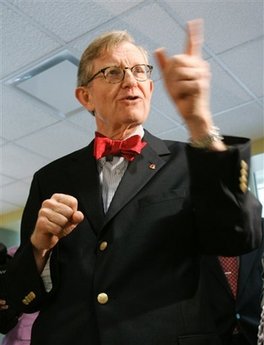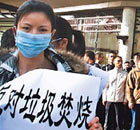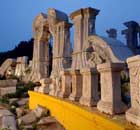Asia-Pacific
Recession takes toll on US university president pay
(Agencies)
Updated: 2010-01-18 21:37
 |
Large Medium Small |
A survey released Monday by the Chronicle of Higher Education showed compensation packages of chief executives at public schools leveling off in 2008-2009, rising a relatively modest 2.3 percent. One in 10 saw their pay decline. Some who did get raises or bonuses gave the money back to their schools.
Presidential salaries at public universities and colleges have come under greater scrutiny as many bursting-at-the-seams schools raise tuition to offset steep declines in state funding.
The latest figures show that the economy and fears of a backlash over perceived high salaries are trumping — at least for now — the argument that public schools need to pay top dollar for top talent.
"Students and families have had to tighten their belts, so I bet they'll appreciate seeing some restraint among college presidents," said Sen. Charles Grassley, R-Iowa, a critic of executive pay at colleges and other nonprofits. "Holding off on raises is in sync with the reality for families trying to pay for college in the midst of high unemployment and the worst economy in decades."
Over the previous six years, annual pay increases of 10 percent or more became the norm for many public school presidents. So while base salaries rose for two-thirds of top executives in the 2008-2009 survey of 185 public universities and community colleges, the dollars involved were significantly smaller.
The median compensation package for public school top executives in 2008-2009 was US$436,111. Eleven public university presidents earned US$700,000 or more, down from 15 the previous year.
"If you got a 2 percent increase, that's more than a lot of faculty got," said Patrick Callan, president of the National Center for Public Policy and Higher Education in San Jose, Calif. "A lot of faculty were furloughed. I'm glad to see the restraint but it's about what you'd expect given the political pressures."
The pay slowdown can be explained both by the recession and greater scrutiny at a time when public schools are under tremendous pressure, said Jeffrey Selingo, editor of the Chronicle of Higher Education.
State tax support for higher education declined 1.1 percent nationwide in 2009-2010 — a drop that would have been much more severe without federal stimulus dollars, according to a separate report Monday by the Center for the Study of Education Policy at Illinois State University.
| ||||
Selingo said officials who set executive pay "are not giving raises because the money is not there, and presidents don't necessarily want to take big raises because they're worried when they go in front of student groups and parents and testify in front of legislators. They don't want their salaries to become the focus."
The trend to reign in pay increases will probably be short-lived, he said. If compensation at public schools keeps stagnating as pay at their private counterparts continues to rise, a backlash will erupt with public school presidents leaving and schools struggling to hire new ones, Selingo said.
The highest-paid president in this year's public school survey is Gordon Gee of Ohio State University, whose pay is worth more than US$1.5 million including salary, retirement and deferred compensation.
Gee is the only executive on the list to earn more than US$1 million. The millionaires' club in private higher education is much larger — a point raised by those who argue public school executives are underpaid given that their schools are typically bigger and more complex to manage, and huge state employers.
In the Chronicle's 2007-2008 analysis of private school presidents, a record 23 topped the US$1 million mark. Median compensation rose 6.5 percent — 15.5 percent at major private research universities.
Gee said he's "not defensive" about what he earns given, among other things, that he took a pay cut to move from private Vanderbilt University and Ohio State is a large and complex university.
"Some of it has to do, I hope, with my competence," Gee said. "I believe I have to earn that salary every day, so I work pretty hard ... Ohio State belongs to the people of Ohio. If on any given day they don't believe I'm earning what I earn, I'll be pumping gas in Vernal, Utah," Gee's birthplace.
Gee donated US$1 million to a student scholarship fund when he returned to Ohio State in 2007 — it's his second tenure at the school — and said he put his US$200,000 bonus and US$28,000 raise into the fund this year.
Other presidents have refused bonuses, requested salary freezes or given money owed them to student aid.
Rounding out the top five highest-paid public university presidents were Mark Emmert of the University of Washington (US$905,004), Patrick Harker of the University of Delaware (US$810,603), John Casteen of the University of Virginia (US$797,048) and Francisco Cigarroa of the University of Texas system (US$787,258).
Eduardo Padron of Miami Dade College was the highest paid community college top executive, with a US$548,459 pay package.












